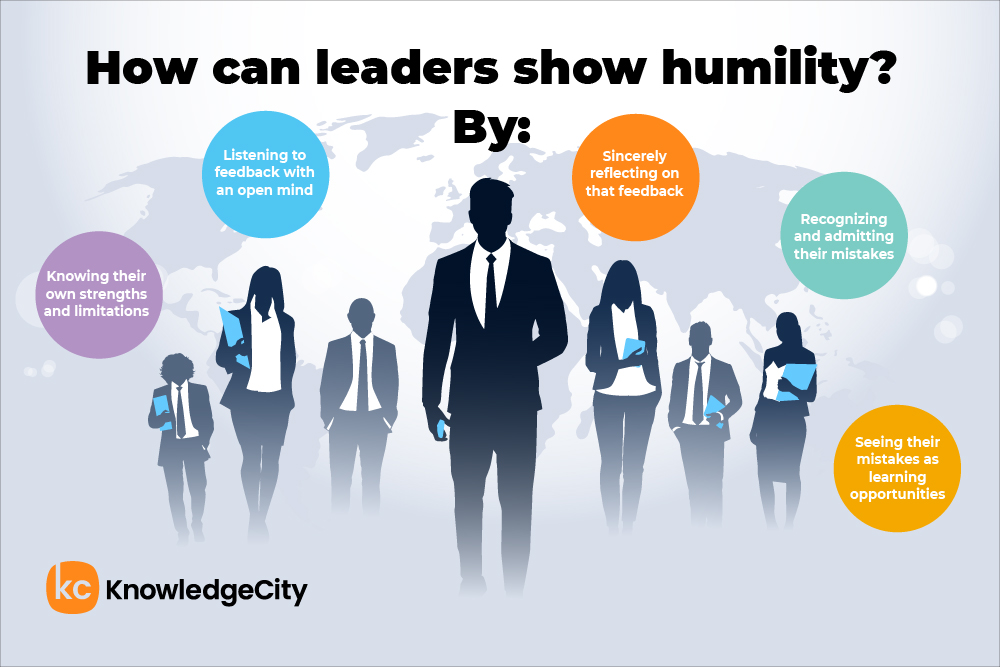When faced with today’s volatile, uncertain, complex, and ambiguous (or VUCA) environment, it’s crucial to cultivate a leadership mindset. This begins with looking inward to find clarity and purpose.
By establishing a strong sense of meaning, you’ll create a stable foundation for yourself to stand on when faced with complexity and constant change. Only then can you adapt to that change, inspire others, and make a positive impact on your surroundings.

What is a Leadership Mindset?
According to Dame International, a leadership mindset means “having certain attitudes, beliefs and expectations that create the foundation of who you are, how you lead others and how you interact with and influence your colleagues.”
A leadership mindset is necessary because it shapes how you see, interpret, and react to workplace situations. It determines what you do and why.
Let’s look at an example of what it means to have a leadership mindset. When confronted with a subordinate who gives feedback that criticizes a decision, two leaders may react differently. One might view it as a threat to their authority, while another might perceive it as a chance for growth and learning. The second person is the one with a leadership mindset.
This kind of mindset impacts:
- Your personal development
- Other employees’ development
- How you interact with colleagues
- How you handle challenges
- How you approach problems and make decisions
- How you view the future
Why Should You Have a Leadership Mindset?
Adopting this mindset lets you become a change agent, someone who inspires change for themselves and their surroundings.
Let’s say your organization doesn’t prioritize community engagement, but you value and believe in it. You seek out like-minded coworkers and get their support in forming a company volunteer group. You then present the idea to management, who approves it. In this situation, you’ve been a change agent. Your values and your leadership in inspiring others initiated a change that not only makes a positive impact on your organization’s public relations, but also assists your community and builds camaraderie among employees.
Those with a leadership mindset can motivate their teams and enable them to perform at their best. They remain composed in challenging circumstances, make tough choices, and effectively navigate demanding situations.
With this mindset, you’ll value growth—both personal and collective—and demonstrate emotional intelligence. You’ll take responsibility for your actions, which encourages your employees to also be more accountable.
Skills Needed for a Leadership Mindset
A leadership mindset involves communicating effectively with your team members, peers, superiors, and external customers. You want to inspire and influence them as much as possible. The ability to inspire others is key to visionary leadership, and it distinguishes a leadership mindset from a management mindset.
Leaders have specific goals and can communicate them clearly and precisely. Imagine that your vision is to lead a successful team to produce quality work. You can communicate your vision for this in a variety of ways, such as:
- Continually focusing on your output quality
- Regularly reminding your team of the vision for quality work
- Sharing articles or knowledge about how to do quality work
- Asking your team to share their best practices
- Having brainstorming sessions on how to improve the team’s quality
To communicate effectively, be sure to give careful thought to what you want to say, considering how best to say it and in what contexts it would be appropriate. When you communicate effectively, you can convey your vision and values, and inspire others to join you.
Emotional agility is another valuable skill. BerkeleyExecEd defines emotional agility as “the practice of allowing thoughts and emotions (even negative ones) to exist without being fixated on them.” Here are steps you can follow to practice emotional agility:
Recognize your patterns. When someone gives you critical feedback, what are your thoughts? How long do you get stuck on those thoughts? What helps you get out of negative thoughts?
Label your thoughts and emotions. If someone questions your actions, you may feel angry. In this case, label it as “anger” to help create distance between you and this emotion.
Accept your thoughts and emotions. What if you feel impatient whenever you communicate with long-winded speakers? Instead of chiding yourself for feeling this way, accept who you are, but don’t let that emotion control your actions. Otherwise, you might do something you regret, like raising your voice at the other person.
Act on your values. For instance, despite valuing mutual respect, you may not show someone the same respect they show you. This would not be acting on your values, so be mindful of what you’re doing and regulate your behavior.
Emotional agility can help leaders make the right decisions and take the right actions, especially during challenging and stressful situations. It also serves as effective leadership mindset training, and helps cultivate a growth mindset.
Having a leadership mindset also means empowering and supporting others, especially your team members.
One approach you can use is to set up a coaching culture within your team. Instead of just giving instructions or solutions to your team members, ask questions to help them reflect, discover solutions on their own, and build their confidence. That will help them build a problem-solving mindset.
If there are areas that they wish to improve on, encourage them to develop an action plan that includes:
- A desired SMART goal (Specific, Measurable, Attainable, Realistic, Timely)
- Step-by-step actions with a concrete timeline
- The required resources needed to accomplish the goal
- The potential issues while working on the goal and ways to overcome them
- The reward for success
Coaching is a supportive leadership style. It can help employees build up their skills and take accountability for their own professional improvement. Coaching can also play a role in leadership training for your team.
Strategies for Cultivating a Leadership Mindset
Author and Forbes Business Council Member Amy Lafko recommends that leaders remain humble, since “overconfidence can prevent the acceptance of ideas and opinions outside of our own.” Leaders can show humility by:
- Knowing their own strengths and limitations
- Listening to feedback, including criticism, with an open mind
- Sincerely reflecting on that feedback
- Recognizing their mistakes and admitting them when necessary
- Seeing their mistakes as opportunities for learning
To encourage a culture of feedback during meetings or brainstorming sessions, you can solicit ideas from others, especially from those whose strengths happen to be your limitations. Show that you value their input and establish an open-door policy to encourage people to voice their opinions.
By listening to others, you can gain a different perspective that you may have missed. Seeking feedback and improvement is essential for growth in leadership, as it fosters openness to change and inspires others to follow suit.
An integral part of having a leadership mindset is leading by example. A leader’s actions have an impact on the team’s culture. If a leader is consistently punctual, they show that they value others’ time. Their team members are likely to become more mindful about time themselves, cultivating that habit of punctuality.
People can be quick to criticize others, especially subordinates’ mistakes. Here are a few questions you can ask yourself instead of pointing the finger at others:
- Am I encouraging that action as the leader?
- What would I have done in similar circumstances?
- How can I support them in their development?
When your actions align with your words and promises, you gain both credibility and others’ trust. Instead of requiring total control, good leaders empower those around them by looking for ways to support employees’ development.
Embrace a growth mindset with continuous learning. When you have a leadership mindset, you continually seek growth—for yourself, for others, and for the organization.
Genuine leaders don’t assume that they have all the answers. They approach situations with curiosity and an open mind. They seek new knowledge, setting aside preconceived notions to truly listen and remain open to feedback, observations, and advice.
Self-reflection is a powerful tool for continuous learning. You are likely your own greatest critic, so reflecting on your actions and decisions can help you grow as a leader.
For instance, when you face a new challenge, you can reflect on how you overcame past challenges by thinking back on both the solutions you found and the mistakes you made. Then think about what you could learn from the consequences of both. This will give you the courage to embrace challenges and make you more mindful in the current situation.
Being consistent in regular reflection requires discipline and persistence. If you want your team to engage in self-reflection, reflect on your own habits. Ask yourself:
- Do I reflect regularly?
- How do I cultivate the habit of self-reflecting?
- How do I build a culture of reflection among my team?
These questions can assist you in encouraging you team to use self-reflection as a constructive tool.
In the VUCA world, when you have a leadership mindset, you become adaptable, resilient, and emotionally agile. You’re able to develop others through coaching and motivate them through effective communication. You can cultivate the leadership mindset by being humble, leading by example, and embracing a growth mindset through continuous learning and self-reflection.
Your mind is a powerful tool; it governs who you are, how you act, how you lead, and how you interact with others. The right mindset can propel you to excel at leadership—inspiring change, motivating teams, making tough decisions, and striving towards both personal and collective growth.
Subscribe to Our Newsletter
Join 80,000+ Fellow HR Professionals. Get expert recruiting and training tips straight
to your inbox, and become a better HR manager.

 Khin Hnin Soe
Khin Hnin Soe 

